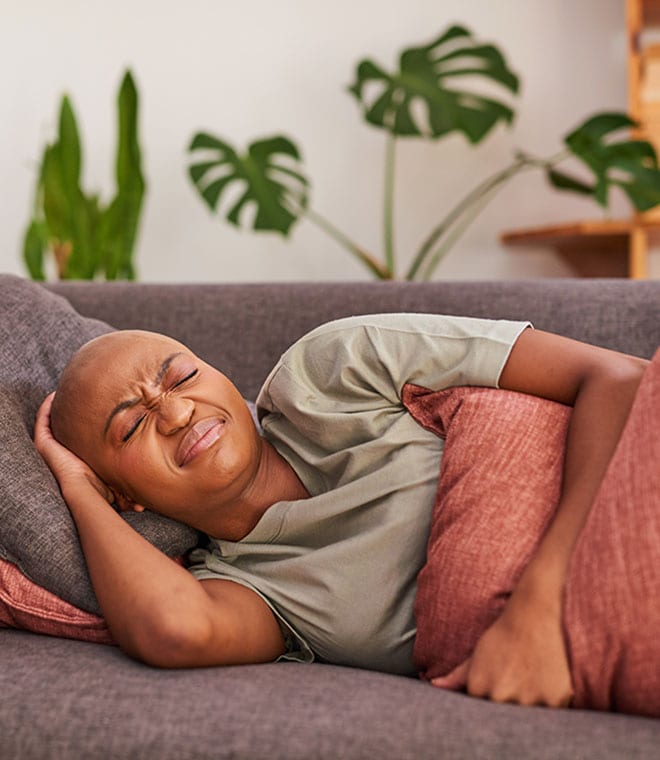Health
Celiac disease: Causes, symptoms and treatment
By Jenilee Matz, MPH May 19, 2025 • 7 min
About 1 in every 100 people worldwide has celiac disease, but many of them don't know they have it. People with this condition have an immune reaction to gluten, the proteins found in wheat, barley, rye and triticale (a cross between wheat and rye). Eliminating gluten from the diet is essential for managing the signs and symptoms of celiac disease.
What is celiac disease?
Celiac disease is an autoimmune disorder. When someone with celiac disease eats foods that contain gluten, their body sets off an immune response that attacks the small intestine. This triggers a host of symptoms and impairs the fingerlike structures inside the small intestine (called villi). Without healthy villi, the body can’t absorb vitamins and nutrients from food. Celiac disease can lead to nutritional deficiencies and other health problems if left untreated. Long-term complications include malnutrition, infertility, issues involving the heart, liver, pancreas, throat and tongue, and more.
While the exact cause of celiac disease is unknown, it appears to run in families. If you have a first-degree relative with celiac disease, meaning a parent, sibling or child, you have about a 10% chance of developing the condition.
Also called celiac sprue or gluten-sensitive enteropathy, celiac disease is not a gluten allergy. In fact, “gluten allergy” is an incorrect term. Celiac disease is also different from gluten sensitivity. Gluten sensitivity can cause some of the same digestive symptoms as celiac disease, but it doesn’t harm the small intestine.
What is gluten?
Gluten is a general name for the proteins naturally present in some grains, including wheat, barley, rye and triticale. It helps foods maintain their shape. Gluten is commonly found in foods that are made from these grains, such as bread, bagels, crackers, pizza and pasta. Many other types of foods contain gluten, like processed meats, French fries, vegetables in sauces, bouillon cubes, beer and more. Gluten-free versions of these products are often available. Gluten can also hide in nonfood items, such as medications, vitamins, toothpastes, skincare products and haircare products.
Celiac disease symptoms
Signs of celiac disease can start at any time. Some people develop symptoms of celiac disease as children, others as adults. Sometimes, people have no symptoms at all. However, people without symptoms are still at risk for long-term complications of celiac disease. When symptoms do occur, they can vary from person to person.
Symptoms of celiac disease in children are not the same as in adults. Digestive symptoms are more common in children and can include:
- Chronic diarrhea
- Stomach pain
- Bloating or a feeling of fullness in your abdomen
- Constipation
- Gas
- Nausea
- Vomiting
- Pale, fatty or foul-smelling stools
- Unintentional weight loss or trouble gaining weight
Other symptoms include poor growth, delayed puberty and skin rashes.
Celiac disease symptoms in adults are often different than those in children. Adults are less likely than children to have digestive symptoms and are more likely to have:
- Anemia
- Bone or joint pain
- Depression or anxiety
- Headaches
- Tiredness
- Tingling numbness in the hands and feet
- Weak, brittle bones
- Red, smooth and shiny tongue
- Canker sores and dry mouth
- Irregular menstrual periods, infertility or repeated miscarriages
- An itchy, blistering skin condition called dermatitis herpetiformis
- Adults with digestive symptoms may experience:
- Abdominal bloating and pain
- Ulcers (sores) on the stomach or lining of the intestine
- Intestinal blockages
What is a celiac disease rash?
About 10% – 15% of people with celiac disease develop a skin rash called dermatitis herpetiformis. It causes very itchy blisters on clusters of skin. It can affect the skin on the elbows, knees, back, buttocks, face and scalp. Your healthcare provider may prescribe a medication to help provide relief from the rash.
Testing for celiac disease
If you have any signs of celiac disease, see your healthcare provider. Symptoms of celiac disease are similar to symptoms of other conditions, such as irritable bowel syndrome, so it’s vital that you see your provider for an accurate diagnosis.
Your healthcare provider will decide how to test for celiac disease. They’ll ask you questions about your symptoms and health history and if any relatives have celiac disease. They’ll likely perform a physical exam and order blood tests. The blood tests look for antibodies that are common in celiac disease. If the test results suggest you have celiac disease, your doctor will likely recommend a biopsy of your small intestine to confirm the diagnosis. If the blood tests are unclear, genetic testing may be done to rule out the possibility of celiac disease.
Celiac disease treatments
At this time, the only way to treat celiac disease is by following a strict gluten-free diet. This allows the small intestine to heal and symptoms to resolve. You shouldn’t restrict your diet before being tested for celiac disease. Avoiding gluten could cause the test results to be inaccurate.
A celiac disease diet involves avoiding foods that contain gluten. You’ll need to read food labels closely and ask questions about ingredients and food preparation when dining out. You should also be mindful about cross-contamination. Even eating small amounts of gluten may cause symptoms in some people.
Your healthcare provider may suggest that you work with a registered dietitian who specializes in celiac disease. They can help you learn how to follow a gluten-free diet that meets your nutritional needs.
Updated by Amy Magill, MA, RDN, May 2025.
Sources:
- https://www.uptodate.com/contents/diagnosis-of-celiac-disease-in-adults
- https://www.uptodate.com/contents/management-of-celiac-disease-in-adults
- https://www.uptodate.com/contents/celiac-disease-in-children-beyond-the-basics
- https://celiac.org/about-celiac-disease/related-conditions/dermatitis-herpetiformis/
- https://www.niddk.nih.gov/health-information/digestive-diseases/celiac-disease
- https://www.eatright.org/health/diseases-and-conditions/celiac-disease/the-gluten-free-diet-building-the-grocery-list
- https://celiac.org/celiac-disease/understanding-celiac-disease-2/what-is-celiac-disease/
- https://acaai.org/allergies/types/food-allergies/types-food-allergy/wheat-gluten-allergy
- https://medlineplus.gov/celiacdisease.html
- https://celiac.org/gluten-free-living/what-is-gluten/
- https://www.niddk.nih.gov/health-information/digestive-diseases/celiac-disease/diagnosis




